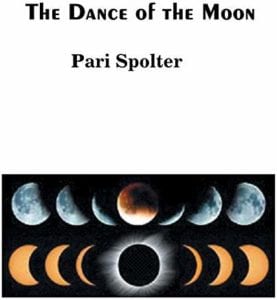
Shelf Unbound: You say that Newton’s and Einstein’s theories of space and time are mutually exclusive and you have proposed a new lunar theory. What’s a layman’s description of your theory?
Pari Spolter: Equating the gravitational force with the quantity or density of inert matter is incorrect. The correct interpretation of Kepler’s third law is: Gravitational force is equal to acceleration times the area: F = a. A. The weight of a body is equal to its mass times the acceleration: W = m . a. Weight is not Force.
Please see my book Gravitational Force of the Sun, my articles “New Concepts in Gravitation,” in Physics Essays, Volume 18, (2005), pages 37–49, “Problems with the Gravitational Constant” in Infinite Energy, Volume 10, No. 59, (2005), page 39, and parispolter.com.
Shelf Unbound: What initially interested you in studying the moon’s movements?
Spolter: My many years of work on gravitational force naturally included the moon problem. Whatever the reason for her attraction, the moon has captivated numerous poets, composers, and literary authors throughout the centuries. The search to understand and explain the complicated motions of the Moon, our closest celestial neighbor, has also been the subject of extensive work by numerous luminaries of the past.
Shelf Unbound: You say that modern calculators and software have made the work in your book possible. How so?
Spolter: I would not have been able to complete the work presented in this book in one lifetime, if not for the advances in technology. The invention of the atomic clock, the US Apollo landings and placement of the corner reflectors, the advent of lunar laser ranging technique, the Lunar Polynomial Tables published in The Astronomical Almanac since 1981 and the availability of computers, of small handheld scientific programmable calculators, of software for plotting and statistical calculations, have made the work presented in this book possible.
Shelf Unbound: How did you go about making complicated concepts accessible?
Spolter: When complicated motion of the moon is presented based on accurate data it is easy to understand.
